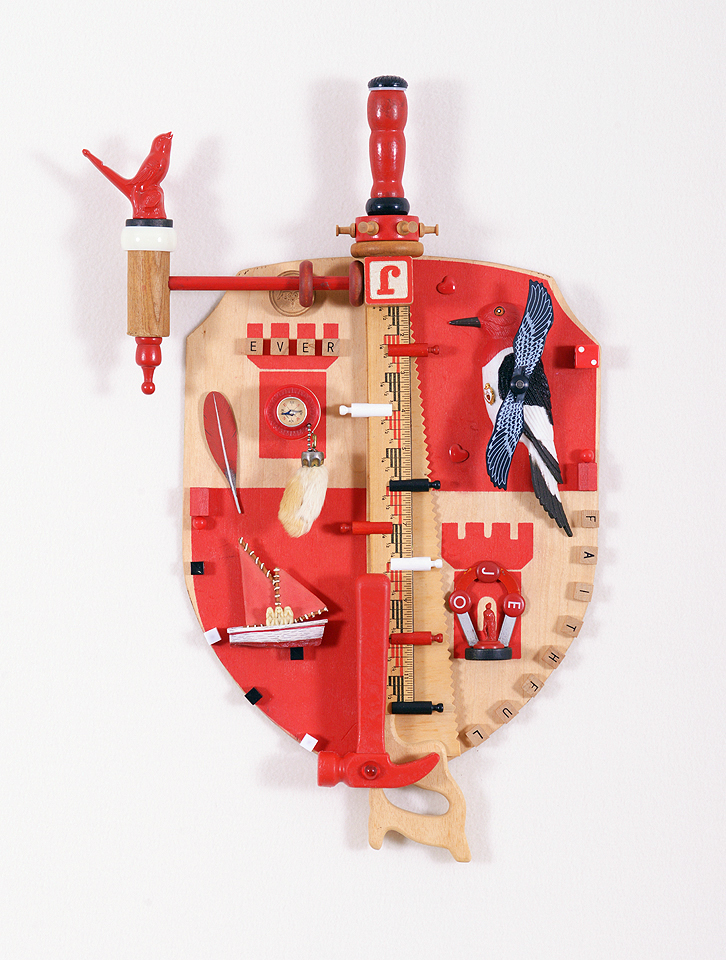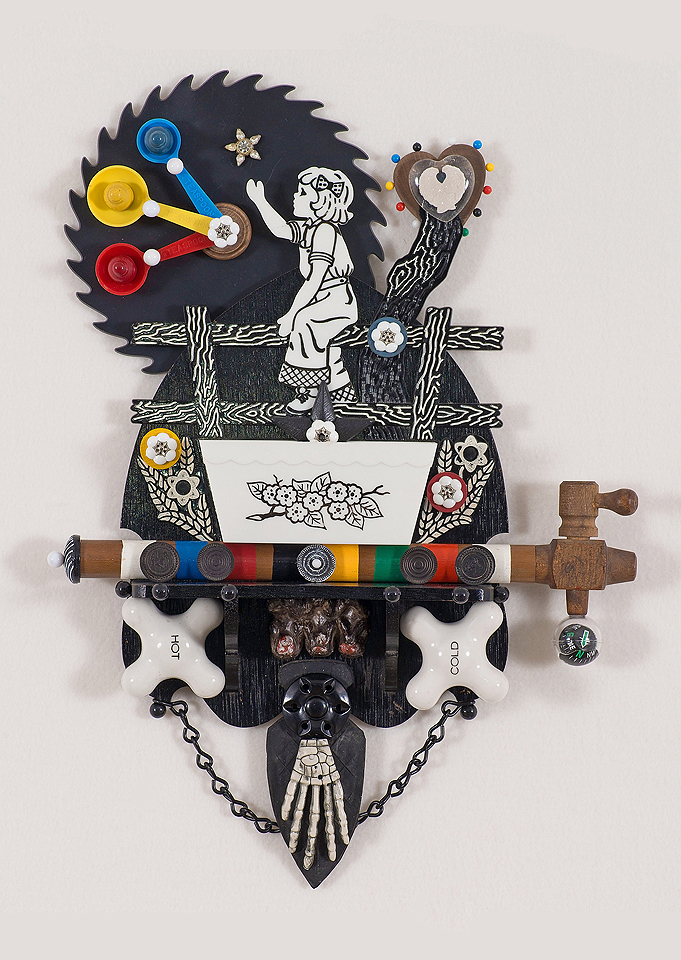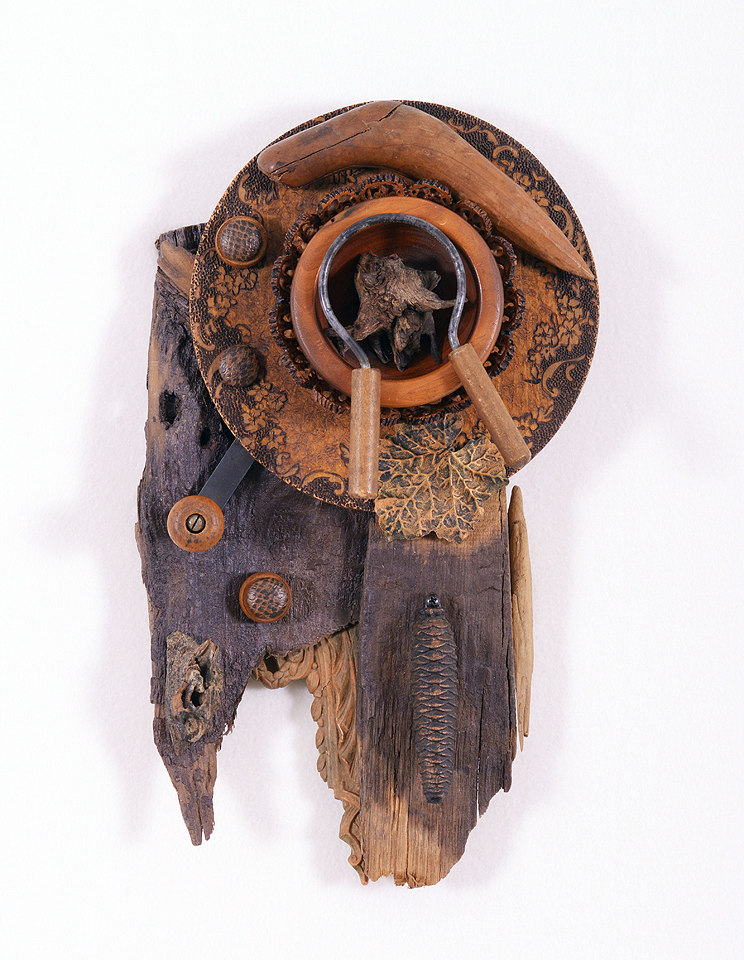JOE B. MILOSEVICH: THE ART OF ASSEMBLAGE
Artist, Joe B. Milosevich creates beautifully intricate and profoundly meaningful assemblage works using found objects that most would typically discard. He uses objects such as old rulers, discarded game pieces, vintage toys, intricate finials and plastic army men to create his works. Milosevich transforms the ugly and discarded into the refined and the beautiful, and together, creating a new interpretation of old objects. His work engages in a deliberate and systematic construction of a fragmented and expressive subjectivity.

Joe B. Milosevich, Self-Portrait in Black, White, Red, and Wood, 2014
Assemblage is a technique that emerged as a three-dimensional counterpart to collage. The term “assemblage” was coined in the early 1950s, when Jean Dubuffet, a French painter and sculptor created a series of collages of butterfly wings, which he titled assemblages d’empreintes. Assemblage, however, existed long before the term was coined – its roots can be traced back to the Cubism movement in collage works by Picasso and Braque during the early 1900’s. Using objects such as bicycle wheels, urinals and irons, Marcel Duchamp, a Dadaist artist, created assemblage works known as “ready-mades.” Dadaism was particularly interested in assemblage, as the medium helped to challenge formal art theories and practices and protest certain political views.

Joe B. Milosevich, Reach, 2014
Assemblage artists use a wide array of objects when creating their work: anything from scraps of wood to plastic game pieces. So how does an artist determine which objects to use, and which to discard? Since childhood, Milosevich has collected a vast array of objects that inspire him. He likes the real world familiarity of the collected objects and believes that his work “has the power to establish a profound and immediate connection with the viewer.” Milosevich believes that, “Objects are glorious trophies, powerful icons, and magical talismans that allow me to investigate and communicate my existence.” While Duchamp used objects to challenge formal art theories and protest political issues, Milosevich utilizes objects to celebrate the people, places, and events of his life journey. Milosevich uses keepsakes or “grail objects” to utilize as glorious trophies, powerful icons, and mysterious talismans.

Recent bodies of Milosevich’s work have focused on spirituality, Mexican-American relations, art vs. craft, collaboration, and vintage toys. Within all of his assemblages, Milosevich embodies a sense of beauty, consummates craftsmanship, and implores content that is both genuine and accessible.

Joe B. Milosevich, Offering, 2014
Sacred is now on view through December 5th at the University Gallery located at 25 E. VanBuren Street. Gallery hours are Tuesday – Thursday, 10am-2pm, and by appointment.
University of St. Francis Gallery exhibitions: USF ART & Design Gallery Schedule 2014-2015
By – Jennifer Moore, Gallery Director


